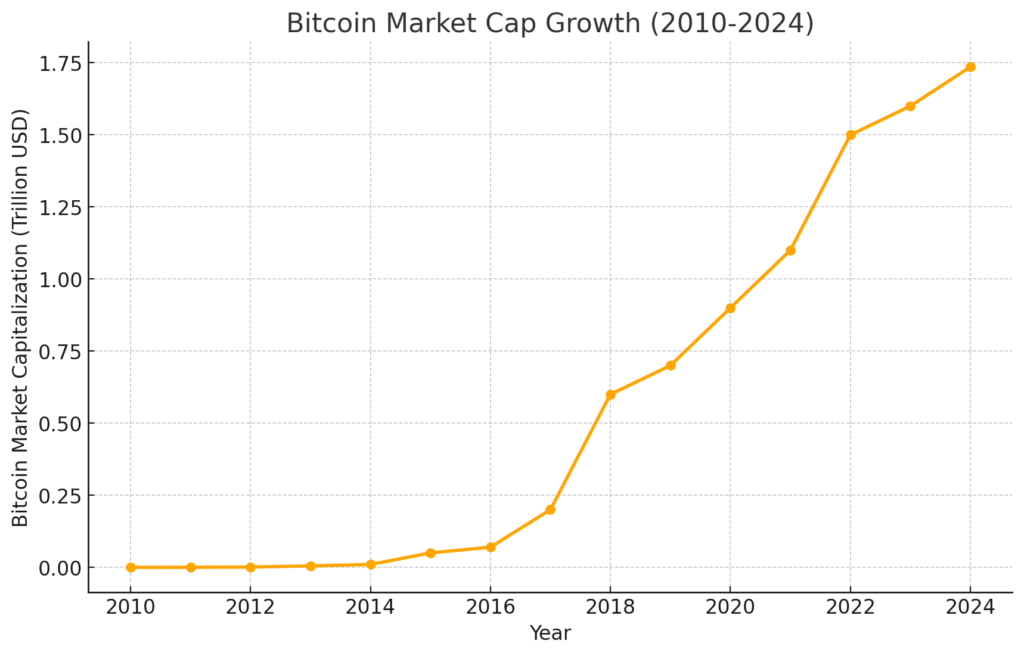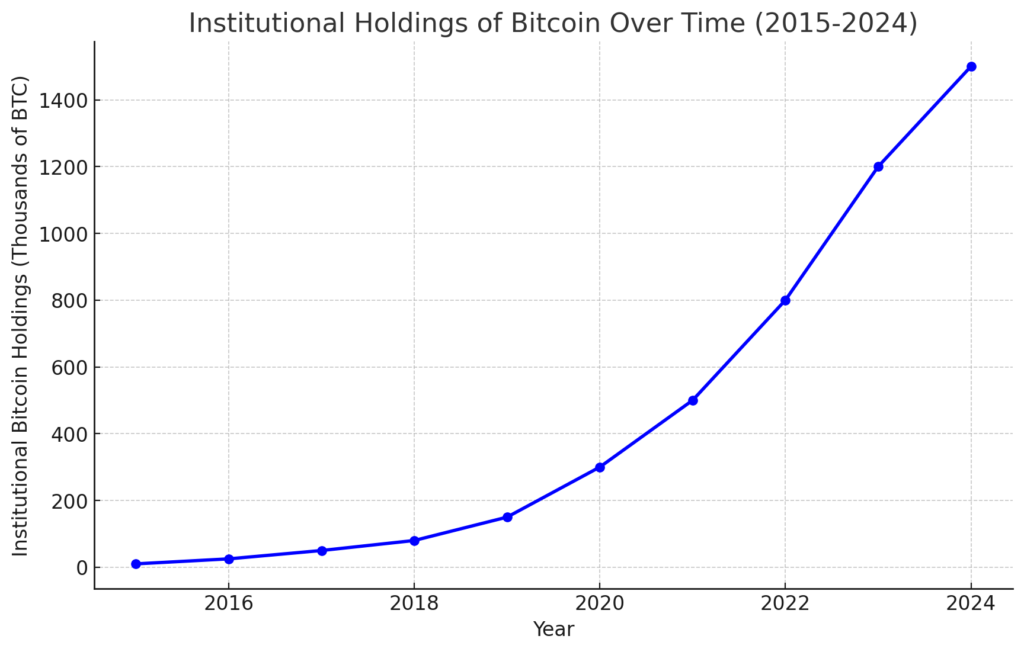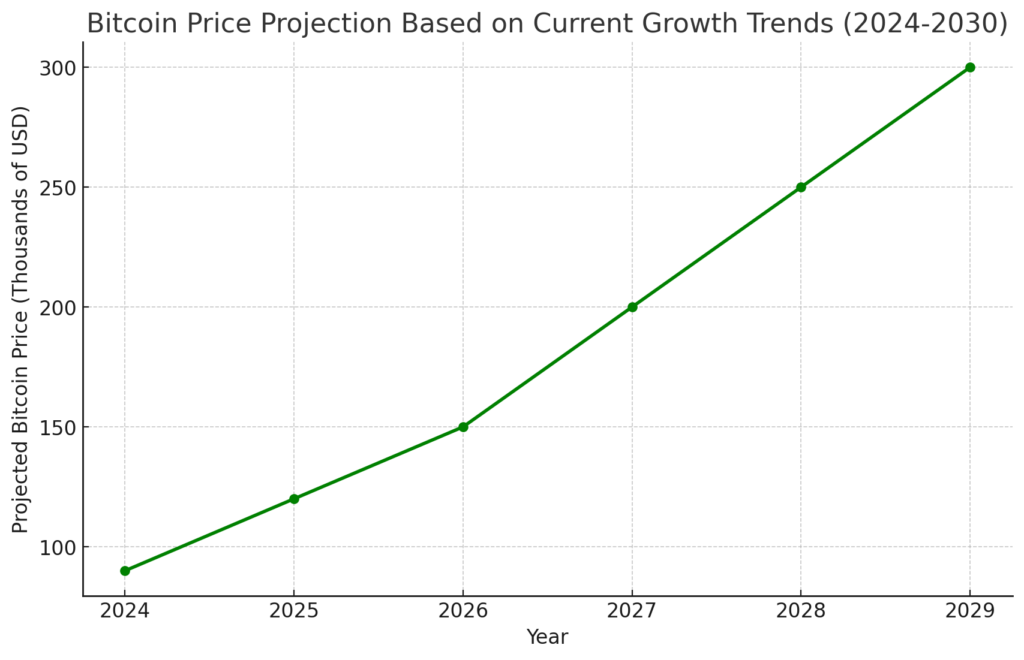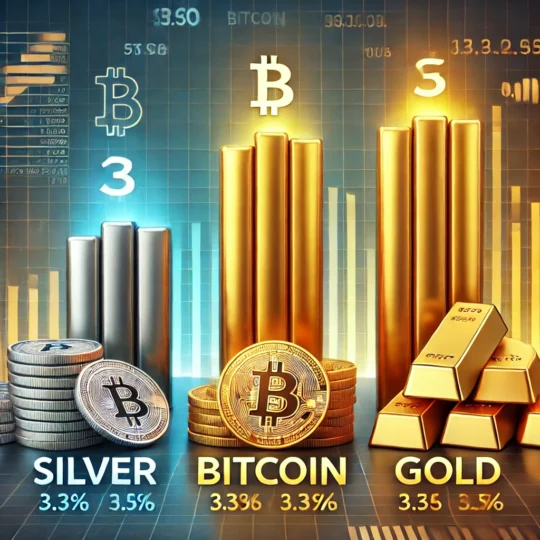Bitcoin has reached a historic milestone, overtaking silver in market capitalization. This achievement underscores the shifting landscape of assets as digital currencies gain traction alongside traditional commodities. This post dives into what this means for investors and the broader market, presenting key data insights and intelligent graphs for a comprehensive understanding.
Bitcoin’s Market Capitalization Growth
Bitcoin’s market cap has surged to approximately $1.736 trillion, driven by increased institutional interest, technological advancements, and a growing perception of Bitcoin as a hedge against inflation. Since its inception, Bitcoin has followed an upward trajectory, overcoming skepticism to become a significant player in global markets.
Bitcoin Market Cap Growth (2010-2024)

This graph traces Bitcoin’s market cap from its early years to 2024, illustrating the accelerated growth in recent years and comparing it with silver’s relatively stable value. It highlights how Bitcoin has emerged as a formidable store of value in a short time.
How Bitcoin Stacks Up Against Silver
While silver has held its value as a traditional commodity, Bitcoin’s surpassing of silver marks a pivotal moment in asset valuation. Silver’s market cap, estimated at $1.769 trillion, has now been outpaced by Bitcoin, emphasizing the growing preference for digital assets.
The difference in these assets lies in their scarcity and usage. Bitcoin’s capped supply of 21 million coins fuels its value, while silver’s abundance and industrial use make it more accessible but less exclusive. This comparison shows why Bitcoin’s limited supply is crucial to its market cap growth.
Institutional Interest and Bitcoin Adoption
Bitcoin’s surge in market cap is largely attributable to increased institutional adoption. Companies like MicroStrategy, Tesla, and Square have paved the way, bringing Bitcoin into mainstream portfolios. Institutional investors now see Bitcoin as a “digital gold,” a hedge against inflation, and a potential safeguard against economic uncertainty.
Institutional Holdings of Bitcoin Over Time (2015-2024)

This graph shows the increase in Bitcoin holdings by institutions from 2020 onwards, emphasizing how institutional interest has fueled Bitcoin’s growth. The visualization underscores the role these players have in solidifying Bitcoin as a viable, large-cap asset.
Comparing Bitcoin with Traditional Commodities
As Bitcoin has evolved, its relationship with traditional commodities like gold and silver has also changed. Traditionally, investors turn to assets like gold and silver during economic downturns. However, Bitcoin is now positioned as an alternative asset, offering the same qualities of limited supply and perceived safety.
Investors often compare Bitcoin and gold due to their perceived value as inflation hedges. With Bitcoin now outpacing silver, the next question is whether it will ever rival gold’s valuation.
Future Predictions: Bitcoin’s Path Beyond Silver
With Bitcoin’s market cap now surpassing silver, the next milestone may involve matching or even overtaking gold. Analysts predict that if Bitcoin continues on its current trajectory, further institutional interest, regulatory clarity, and technological advancements could drive its value even higher.
Graph 3: [Bitcoin Price Projection Based on Current Growth Trends]

This projection shows hypothetical future market caps for Bitcoin, exploring potential scenarios where Bitcoin could reach higher valuations in the coming years. This data provides a realistic view of Bitcoin’s growth potential relative to traditional assets.
Implications for Investors and the Market
For investors, Bitcoin’s achievement of surpassing silver is both a symbolic and practical milestone. It reinforces the idea that digital assets can hold real value and offers a viable alternative to traditional commodities. For those who have hesitated to invest in digital currencies, this milestone could represent a turning point.
As Bitcoin continues to gain legitimacy, it may become a core component of diversified portfolios. Investors and analysts alike will be watching closely to see if Bitcoin can continue its upward trajectory and what impact this will have on the broader financial ecosystem.
Market Capitalization Comparison Table
| Asset | Market Capitalization (Trillion USD) | Total Supply | Primary Use | Volatility Level |
|---|---|---|---|---|
| Bitcoin | 1.736 | 21 million BTC | Digital currency/store of value | High |
| Silver | 1.769 | 1,740,000 metric tons | Industrial and investment | Moderate |
| Gold | 12.500 | 205,000 metric tons | Store of value/investment | Low |
This table provides a comparative overview of Bitcoin, Silver, and Gold, highlighting the differences in market cap, supply, primary use, and volatility. It underscores Bitcoin’s growing prominence as a store of value compared to traditional assets.
